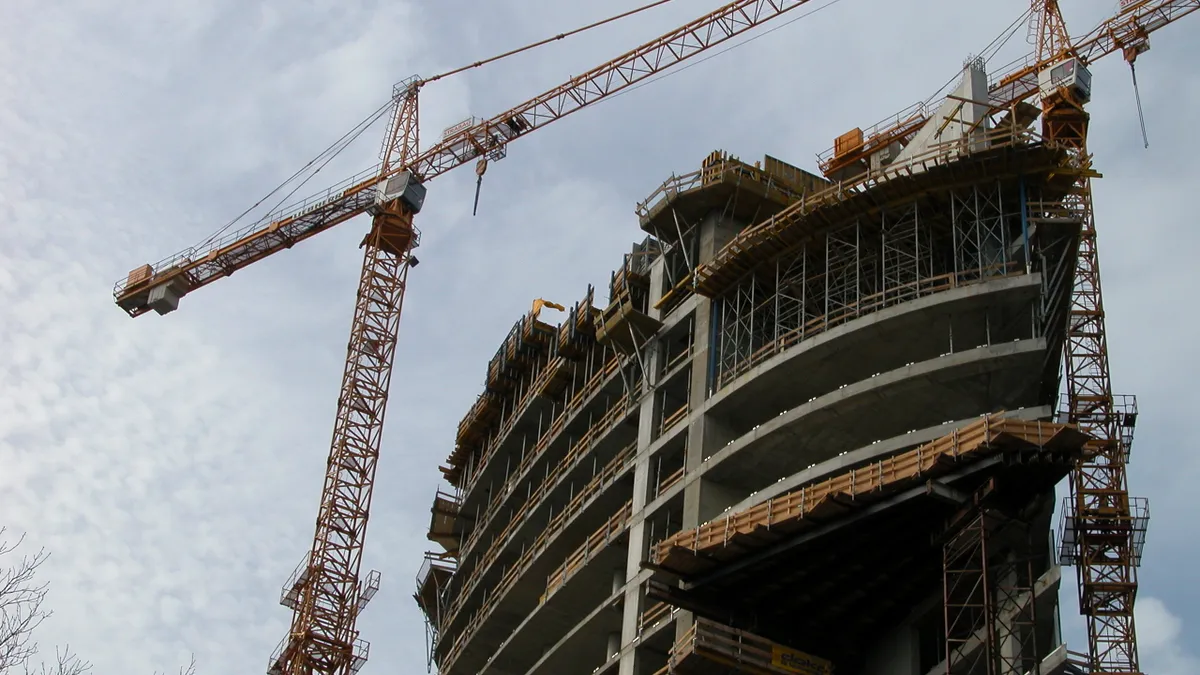Dive Brief:
- The value of October nonresidential construction starts increased 15.1% from September to $29.5 billion, a welcome departure from the standard 4% seasonal drop, according to ConstructConnect.
- Month to month, the institutional sector (31.5%) was responsible for the majority of October's strong gains, but heavy engineering/civil contributed to the uptick as well (11.3%). The smaller-volume industrial category was up 43.6%, but commercial activity was unchanged from September.
- Year over year, October 2016 starts were up 11% when compared to the same period in 2015, due to a mammoth 477.2% increase in the industrial category combined with higher institutional (31.1%) and engineering starts (10.7%). All of this positive activity made up for a 15.3% dip in commercial starts.
Dive Insight:
Year over year, total jobs in architectural and engineering services — a leading indicator of construction activity –— were up 1.7%. The number of U.S. construction jobs increased by 11,000 in October, but, year to date, employment increased by only an average of 8,000 jobs per month, a sharp decline from the 18,000 January-October 2015 average monthly increases.
California and Colorado were each home to two of ConstructConnect's 10 largest project starts, while the rest were in geographically diverse locations. The top seven projects in dollar value were the University of California Merced expansion — Merced, CA ($1.3 billion); University of Texas Arlington Science and Engineering Innovation and Research Building — Arlington, TX ($125 million); Route 264 Interchange Improvements — Norfolk, VA ($107 million); Million Air Terminal and Hangar — White Plains, NY ($88 million); Elements at Prairie Center — Brighton, CO ($88 million); New Hall County Campus, Lanier Technical College — Oakwood, GA ($75 million); The Alexan South Echo — Los Angeles ($75 million).
The heavy engineering/civil category, which saw strong gains last month, could be in store for an even bigger boost in the coming years if President-elect Donald Trump is successful in passing his proposed $1 trillion infrastructure plan. However, experts say that crucial details of the plan must still be unveiled before they can determine whether it is feasible. Construction groups have been calling on all levels of government to boost infrastructure spending, as the public sector has significantly lagged behind the private sector.











